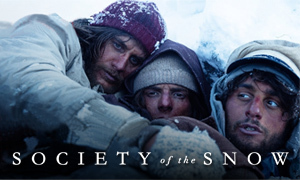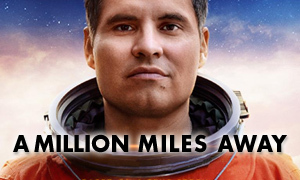Is the Science in San Andreas Accurate?
Exploring What's Realistic and What's Not
San Andreas follows the familiar formula for a summer blockbuster: Unleash a natural disaster, insert pretty faces, and add a lot of CGI destruction. Yet, just because we can show cities crumbling from massive earthquakes doesn't mean things will actually happen that way in real life. Many moviegoers have left the theater believing that what they saw in the San Andreas movie is accurate and likely to occur, with some even heading to the store to improve their earthquake readiness. However, before we start to panic, let's question the story and separate the facts from the fiction.
Could an earthquake along the San Andreas Fault create a large tsunami?
No. According to U.S. Geological Survey seismologist Dr. Lucy Jones, due to the fact that the San Andreas Fault is mostly on land, it will never create a large tsunami. Also, tsunamis caused by earthquakes are created at subduction zones, places where tectonic plates collide and one plate is pushed under another. As a result, the sea floor is deformed and a tsunami is created. There hasn't been an active subduction zone under San Francisco or Los Angeles for millions of years. Also, the San Andreas Fault is vertical, so even if it did go underwater someday, it wouldn't cause the ocean floor to move up or down that much, which is necessary for a large tsunami. -The Hollywood Reporter
Is the size of the giant tsunami we see in the movie plausible?
No. Seismologist Lucy Jones says that a large tsunami is 50 feet high. It is nowhere near the height of the tsunami in the movie, which washes over the Golden Gate Bridge's roadway, standing roughly 270 feet above the water. "They can't be bigger than the ocean is deep," says Jones (CBSNews.com). The surfing-wave style tsunami shown in the movie also doesn't happen. Tsunamis are rising walls of water, not cresting waves (LATimes.com).
Could a magnitude 9.6 earthquake really hit San Francisco?
No. Magnitude 9 earthquakes only occur on subduction zones. As stated above, there hasn't been an active subduction zone under San Francisco or Los Angeles for millions of years. In the San Andreas movie, a 9.6 magnitude earthquake hits San Francisco. However, earthquake intensity along the modern-day San Andreas fault maxes out at approximately 8.3 (The Hollywood Reporter). The most devastating earthquake to hit San Francisco in recent history was the 1906 San Francisco earthquake, which is widely believed to have been around 7.8 in magnitude (Berkeley Seismological Laboratory).
Are the aftershocks in the movie realistic?
Setting aside that the movie exaggerates the possible earthquake magnitude along the San Andreas, the aftershocks in the movie are in line with what could follow a real event on that scale. -The Hollywood Reporter (Dr. Lucy Jones)
Could a quake in Nevada trigger a quake in LA, in turn triggering a quake in San Francisco?
Yes. In the San Andreas movie, a 9.6 magnitude earthquake hits San Francisco, which was triggered by a 9.1 magnitude quake in Los Angeles, following a 7.1 in Nevada. U.S. Geological Survey seismologist Dr. Lucy Jones says that if you adjust the magnitudes for what's possible along the real San Andreas Fault, the movie's triggering pattern is plausible.
Similar patterns have happened in recent history. In 1992, a 7.3 quake hit Southern California and triggered a 5.7 in Nevada (NPR.org). The 1906 San Francisco earthquake triggered 5 to 6 magnitude earthquakes in Santa Monica Bay, Imperial Valley, Nevada and Oregon. These are known as "triggered earthquakes" because they are too far away to be "aftershocks" (The Hollywood Reporter).
Could the San Andreas Fault open up to create the canyon we see in the movie?
No. As seismologist Lucy Jones states in her article on the movie, "the gaping chasm we see rupturing the San Andreas in central California belongs to the realm of the completely impossible." If the San Andreas Fault could open up to the degree shown in the movie, there would be no friction, and it is friction that creates an earthquake. -The Hollywood Reporter
Have any earthquakes in recorded history been larger than the movie's 9.6 quake?
No, but the Great Chilean earthquake that hit Chile on May 22, 1960 comes very close. It measured 9.5 in magnitude and is the largest earthquake ever recorded.
Can seismologists predict earthquakes?
No. In the San Andreas movie, a Caltech seismologist predicts the looming disaster and is heralded as a hero. However, Dr. Lucy Jones, a real seismologist with the U.S. Geological Survey agency, says that there does not yet exist a way to predict the time when an earthquake will strike. "Unfortunately, what they're doing in the movie has really been shown to not work," says Jones (NPR.org).
Many methods have been explored, including strain meters, magnetic and electric signals, as well as animal behavior. None have been proven successful. Jones says that the only time when earthquakes can be predicted with success is right after one occurs. This includes both triggered earthquakes (described earlier) and aftershocks, two things that the movie gets right (The Hollywood Reporter). Jones also says one plus side is that today earthquakes can be recognized so quickly after they begin, that people can often be alerted prior to the earthquake reaching them (NPR.org).
Is the level of destruction that we see in the movie accurate?
No. Seismologist Lucy Jones says that the level of destruction is over-the-top (The Hollywood Reporter). New buildings are designed to be able to withstand large scale quakes, at least to enough of a degree that people would be able to escape. There would be heavy damage, but there would almost certainly be enough time to get out before they might collapse (TheGuardian.com). "You're going to have pockets of destruction, pockets of collapse and casualties," says former Earthquake Engineering Research Institute president Farzad Naeim, "but it's not going to be Armageddon. The toppling of buildings is very rare" (LATimes.com).
Could the East Coast feel a California earthquake?
No. U.S. Geological Survey seismologist Lucy Jones says that even the great 1906 San Francisco earthquake (with an approximate magnitude of 7.8) could only be felt as far away as Nevada. -LATimes.com
Does the movie get the terminology right?
Not exactly. Near the beginning of the San Andreas movie, Paul Giamatti's character uses the term "Richter magnitude" when talking about a large earthquake. In reality, the Richter scale was developed to assess small California earthquakes. It is not capable of recording very large earthquakes. To do that, seismologists use the moment magnitude scale (MMS), which measures the size of earthquakes in terms of the energy released. -TheGuardian.com
What's the most accurate part about the San Andreas movie?
According to seismologist Lucy Jones, the most accurate part of the movie is the depiction of the emotions, with better prepared and more knowledgeable characters reacting in a more collected manner, heightening their survival chances. "And it's the emotions that, as usual, Hollywood got better than the facts," says Jones (NPR.org). As shown in the movie, knowing first aid, how to "Drop, Cover, Hold On," that the ocean receding can mean a tsunami is approaching, that landlines still function when cell phones don't, and the proper execution of an emergency plan can all make things safer for yourself and everyone around you (The Hollywood Reporter).
But didn't star Dwayne Johnson tell Jimmy Fallon that everything in San Andreas could actually happen?
During an appearance on the Tonight Show with Jimmy Fallon, Dwayne Johnson said, "We had the world's top seismologist and earthquake scientist pore over the script, challenge us with the script, so by the time they walked away they said, 'Everything you guys shoot in the movie could actually happen.'"
One of those experts who consulted on the movie quickly responded to the actor's comment, "I certainly don't agree with what Dwayne Johnson said on Jimmy Fallon the other night." Thomas Jordan, USC professor and director of the Southern California Earthquake Center, says that the filmmakers disregarded much of his advice.
Press kits distributed to reporters addressed the science of the San Andreas movie in a more truthful manner, stating, "Applying creative license to a real-world threat, the story's far-reaching scenarios aim for a heightened sense of action and drama. Nevertheless, while not everything depicted on the screen is fact-based, the film still acknowledges the reality behind it." -LATimes.com
Real Earthquake Footage & San Andreas Videos
Further explore the accuracy of the San Andreas movie through the videos below. Also take a look back at significant California earthquakes in recent history, including the massively devastating 1906 San Francisco earthquake and ensuing fires that wiped out most of the city.
WATCH San Andreas Movie Without the CGIIf the San Andreas movie was made
without the help of computers, this is
what it would look like. These clips show
you various movie scenes before the CGI
was added. They're not nearly as
impressive as the finished product, but
they still look pretty cool. |
WATCH San Andreas Fault DocumentaryThis San Andreas Fault documentary
chronicles our growing knowledge of the
fault since the 1906 San Francisco
earthquake. Recent quakes and the science
of plate tectonics is discussed. The San
Andreas Fault runs roughly 810 miles
through California and forms the tectonic
boundary between the North American Plate
and the Pacific Plate. |
WATCH 1989 San Francisco Earthquake FootageThis video features footage from the
October 17, 1989 San Francisco earthquake,
commonly referred to as the San
Francisco-Oakland earthquake or the Loma
Prieta earthquake. It occurred during a
live broadcast of the 1989 World Series at
Candlestick Park. Damage included the
collapse of an upper deck section of the
Bay Bridge and the catastrophic collapse
of the upper level of the Cypress Street
Viaduct, which claimed 42 lives. |
WATCH 1906 San Francisco Earthquake FootageThe utter destruction seen in the 2015
movie San Andreas is more in line
with the April 18, 1906 San Francisco
earthquake than others in more recent
years. Over 80% of San Francisco was
destroyed and approximately 3,000 people
lost their lives. However, it was not the
magnitude 7.8 (approx.) earthquake and its
aftershocks that caused most of the
damage. It has been estimated that the
subsequent fires that burned out of
control for three days accounted for up to
90% of the total devastation. This 1906
San Francisco earthquake footage shows the
survivors amid the smoldering ruins. |
WATCH San Andreas Movie TrailerWatch the San Andreas movie
trailer for the film starring Dwayne
Johnson as rescue-chopper pilot Ray
Gaines, who must find and save his wife
and daughter amid the chaos of a major
California earthquake. |
Link-to-Learn More:
- Real-Time Earthquake Map at U.S. Geological Survey (USGS)
- Earthquake Preparedness Tips from the American Red Cross
- Official San Andreas Movie Website







